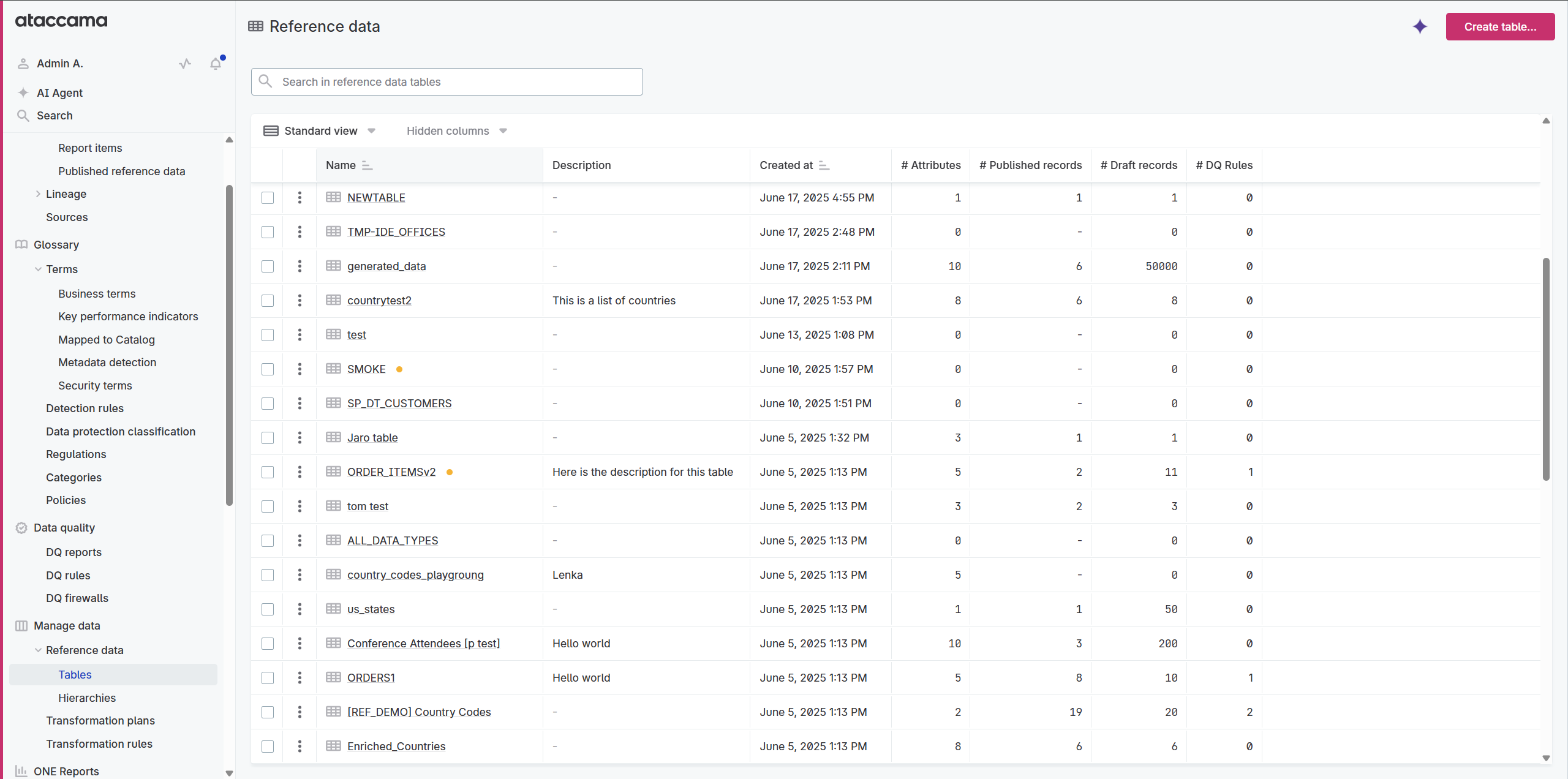Reference Data Management
Turn reference data into a trusted, governed asset that drives business value immediately. Whether you’re evaluating reference data management solutions or ready to implement, this guide shows you how to establish a single source of truth for your organization’s reference data.
What is reference data management?
Reference Data Management (RDM) manages the standardized values used to classify and describe other data across your organization. Think of it as your organization’s controlled vocabulary: product codes, country lists, currency codes, and industry classifications that need to be consistent everywhere they’re used.
Common issues
When reference data is inconsistent or scattered, it creates significant business challenges:
-
The same customer appears differently across systems.
-
Product codes don’t match between departments.
-
Regulatory reports fail validation.
-
Multiple versions exist across systems with unclear ownership.
-
Manual processes don’t scale.
Reference data management in ONE
Ataccama ONE simplifies reference data management with a comprehensive platform designed for both business users and technical teams. The Reference Data module provides everything you need to transform scattered data into governed, trustworthy assets.
To explore the capabilities, go to Manage reference data > Reference Data.

Key capabilities
Whether you’re consolidating data from multiple systems or ensuring compliance across departments, ONE lets you:
- Import and organize your data
-
Import from files or existing systems, then structure and modify tables as your needs evolve with complete approval workflows and record history.
- Set up access and ownership
-
Role-based permissions ensure the right people have the right access - from data owners who control governance to viewers who simply need current information.
- Handle complex data scenarios
-
Manage hierarchical relationships, create cross-system mapping tables, and leverage AI assistance for bulk operations and data quality improvements.
- Use reference data across the platform
-
Published reference data becomes available throughout ONE via the Catalog, integrating seamlessly with data quality rules, data transformations.
How to use this guide
Choose your path based on your current needs:
New to reference data?
Start with Quick Start to get hands-on experience, then explore Common Use Cases for real-world scenarios.
Ready to implement?
Follow the Get Started topics: Create Tables • Set Up Governance • Publish Data.
Managing existing data?
Use these topics for day-to-day operations: Work with Records • Change Structure • Export Tables • Manage Hierarchies • Work with Published Reference Data.
Need advanced integration?
Try these end-to-end workflows: Export to Database • Create Validation Rules • Deduplicate Data.
Optimizing your setup?
Review these resources: Best Practices • Troubleshooting.
Was this page useful?
